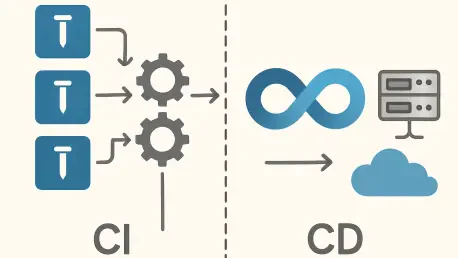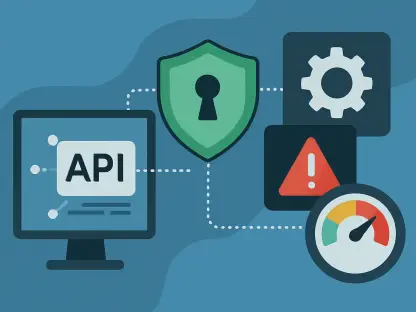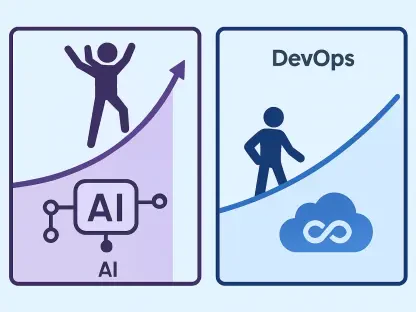In the ever-evolving landscape of software development, the amalgamation of Continuous Integration (CI) and Continuous Delivery (CD) into the catch-all term “CI/CD” has become a common practice, yet it often masks the profound differences between these two pivotal elements of DevOps. This oversimplification can lead to inefficiencies, misaligned priorities, and even operational failures in environments where precision and clarity are paramount. The reality is that CI and CD serve distinct purposes, operate on different timelines, and require unique skill sets and tools. By treating them as a single entity, organizations risk diluting their effectiveness and creating unnecessary friction in their workflows. This article delves into the compelling reasons for recognizing CI and CD as separate disciplines, exploring their individual roles, structural differences, and the tangible benefits of decoupling them to enhance both developer agility and system reliability in modern software pipelines.
Understanding the Core Differences
CI: Ensuring Code Quality
The essence of Continuous Integration lies in its commitment to maintaining the integrity of code changes before they are merged into a shared repository, ensuring that every update meets stringent quality standards. CI acts as a gatekeeper, employing automated builds, unit tests, integration checks, and static code analysis to validate each commit or pull request. This process is designed to catch defects early, preventing problematic code from disrupting the main branch. Developers rely on CI to provide rapid confirmation that their changes are safe, fostering confidence in frequent integrations. Without this rigorous validation, the risk of introducing errors into collaborative environments increases exponentially, potentially derailing entire projects. The emphasis here is on preemptive quality assurance, making CI an indispensable foundation for collaborative coding practices where multiple contributors work simultaneously on complex systems.
Beyond its role as a quality checkpoint, CI serves as a catalyst for developer productivity by streamlining the feedback loop that informs iterative coding practices. When a developer submits a change, CI pipelines trigger a series of automated validations, often completing within minutes, to deliver actionable insights on potential issues like syntax errors or failed tests. This immediacy allows for quick corrections, minimizing downtime and maintaining momentum in fast-paced development cycles. Furthermore, CI often integrates compliance measures, such as vulnerability scanning, to ensure that security considerations are addressed at the earliest stage. By focusing on these elements, CI not only safeguards code integrity but also empowers teams to iterate with speed and precision, avoiding the costly delays that arise from late-stage defect discovery in collaborative software projects.
CD: Managing Safe Delivery
Continuous Delivery shifts the focus from code validation to the strategic rollout of validated artifacts to end users or production environments, prioritizing safety and control over speed. Unlike CI, which operates in the developer’s domain, CD is concerned with the downstream impact of releases, ensuring that changes reach consumers without causing disruptions or compromising system stability. Techniques like canary rollouts, blue/green deployments, and feature flag management are often employed to mitigate risks during deployment. These methods allow for gradual exposure of new features to subsets of users, enabling teams to monitor performance and gather feedback before full-scale implementation. The goal is to protect the user experience while adhering to business and regulatory requirements that dictate cautious delivery schedules in many industries.
Additionally, CD encompasses a broader scope of risk management by incorporating extended monitoring and validation phases that can span hours or days, depending on the complexity of the environment. This deliberate pace stands in stark contrast to CI’s rapid cycles, reflecting the need to balance innovation with reliability when changes are exposed to real-world conditions. Rollback mechanisms and observability tools play a critical role here, providing safeguards against unforeseen issues and ensuring accountability during deployment. For instance, in high-stakes sectors like healthcare, CD processes might involve multiple approval gates to comply with strict governance standards. By prioritizing these controlled strategies, CD ensures that the transition from development to delivery does not jeopardize operational continuity or customer trust, highlighting its distinct purpose within the software lifecycle.
Operational and Structural Distinctions
Timelines and Pace
One of the most striking differences between CI and CD lies in their operational timelines, which are inherently tied to their respective priorities in the software development pipeline. CI thrives on immediacy, with processes designed to provide feedback within minutes of a code commit or pull request submission. Automated tests and builds are triggered almost instantly, allowing developers to address issues like failing tests or integration conflicts without delay. This high-frequency cycle is essential for maintaining a seamless flow of changes in dynamic team environments where multiple updates occur daily. The rapid pace of CI ensures that defects are identified and resolved before they accumulate, preserving the stability of the shared codebase and enabling continuous progress in development sprints.
In contrast, CD operates on a more measured timeline, reflecting the cautious nature of delivering changes to live environments where the stakes are significantly higher. Rollouts may be scheduled daily, weekly, or on-demand, depending on organizational risk tolerance and compliance needs. Validation in CD often extends over longer periods, as teams monitor the impact of deployments through metrics like error rates or user feedback. This slower cadence allows for thorough assessment and adjustment, minimizing the likelihood of widespread disruptions during release. For example, a financial institution might limit production updates to weekly windows to align with regulatory audits. The deliberate pace of CD underscores the necessity of separating it from CI, as their mismatched rhythms demand distinct workflows to avoid bottlenecks and ensure both efficiency and safety in software delivery.
Ownership and Team Dynamics
The ownership models for CI and CD further illustrate their divergence, as each process aligns with different roles and responsibilities within an organization’s structure. CI is predominantly managed by developers and platform teams who focus on maintaining build systems, test frameworks, and integration signals. Their primary objective is to empower coding teams to iterate quickly by providing standardized infrastructure that catches errors early in the development cycle. This developer-centric approach ensures that CI tools and processes are optimized for speed and accessibility, enabling seamless collaboration across distributed teams. The emphasis on early validation means that platform engineers often work closely with developers to refine pipelines, ensuring that every change undergoes rigorous scrutiny before advancing to subsequent stages.
On the other hand, CD typically falls under the purview of release engineering, Site Reliability Engineering (SRE), and product teams, whose focus is on safeguarding customer experience and business outcomes during deployment. These groups prioritize stability over speed, managing rollout strategies, monitoring system health, and implementing rollback procedures to address potential failures. Their cross-functional nature often requires coordination with stakeholders beyond development, including compliance officers or business analysts, to align releases with organizational goals. This distinct ownership model highlights the need for specialized expertise in CD, as the challenges of delivery—such as ensuring minimal downtime or meeting regulatory standards—differ significantly from CI’s integration concerns. Separating these responsibilities clarifies accountability and enhances the effectiveness of each discipline.
Technical and Practical Implications
Distinct Abstractions and Tools
The technical frameworks supporting CI and CD reveal another layer of separation, as each process relies on specialized abstractions tailored to its unique objectives in the software pipeline. CI centers on build consistency and validation, utilizing tools for automated testing, dependency management, and early compliance checks like artifact signing or Software Bill of Materials (SBOM) generation. These mechanisms ensure that code changes meet quality and security standards before integration, providing a reliable foundation for downstream processes. The focus is on creating trusted artifacts through streamlined pipelines that prioritize repeatability and transparency, enabling developers to merge changes with confidence. Combining these abstractions with CD tools risks overloading systems with incompatible priorities, leading to inefficiencies that could be avoided through distinct configurations.
Conversely, CD abstractions emphasize deployment control and risk mitigation, leveraging strategies like environment promotion, feature flags for safe toggling, and observability platforms for real-time health monitoring. These tools are designed to manage the complexities of releasing changes across diverse environments, ensuring that rollouts are predictable and reversible if issues arise. Automated rollback systems and progressive deployment policies further enhance accountability, particularly in regulated industries where compliance is non-negotiable. The contrast between CI’s build-focused abstractions and CD’s delivery-oriented mechanisms underscores the impracticality of merging them into a single workflow. Treating them as separate entities allows for targeted optimization, ensuring that the right tools are applied to the right challenges without creating unnecessary technical debt or operational friction.
Risks of a Unified Pipeline
Merging CI and CD into a singular pipeline poses significant practical risks that can undermine the efficiency and reliability of software development workflows. When these processes are coupled, a failure in CI—such as a broken build or failing test—can unnecessarily halt CD activities like scheduled releases, even if the issues are unrelated to the deployment artifact. This rigidity introduces delays that frustrate teams and disrupt delivery timelines, particularly in fast-moving projects where time-to-market is critical. Additionally, a unified pipeline often obscures the distinct goals of integration and delivery, making it difficult to allocate resources effectively or prioritize fixes based on context. The resulting bottlenecks can erode developer morale and slow overall progress, highlighting the pitfalls of an oversimplified approach to these complex disciplines.
Moreover, the fusion of CI and CD into one system increases operational fragility by creating dependencies that amplify the impact of failures across the pipeline. For instance, a misconfigured rollout strategy in CD might interfere with CI’s validation processes, causing cascading issues that are hard to isolate and resolve. This lack of separation also muddies accountability, as teams struggle to determine whether a problem originates from integration or delivery phases. The consequences are not merely technical but also cultural, as blurred responsibilities can lead to finger-pointing rather than collaborative problem-solving. By decoupling CI and CD, organizations can mitigate these risks, tailoring their approaches to address the specific demands of each phase while maintaining clarity in ownership and reducing the likelihood of systemic breakdowns in their software delivery systems.
Embracing a Balanced Future
Reflecting on the journey through the nuances of CI and CD, it becomes evident that treating these as distinct disciplines has paved the way for more resilient software development practices in numerous organizations. The deliberate separation has allowed teams to address integration and delivery challenges with precision, ensuring that code quality is never compromised while deployments remain safe and controlled. This approach has proven instrumental in industries where both agility and caution are non-negotiable, demonstrating that specialization fosters stability rather than complexity.
Looking ahead, the next step for organizations should be to invest in modular developer platforms that support the independent optimization of CI and CD processes. Exploring tools and frameworks that respect these boundaries can enhance workflow composability, allowing seamless integration when needed without sacrificing focus. Additionally, fostering cross-functional training to bridge understanding between integration and delivery teams can further strengthen collaboration. By committing to this separation, the balance between rapid iteration and reliable delivery can be sustained, driving innovation in an increasingly intricate technological landscape.









